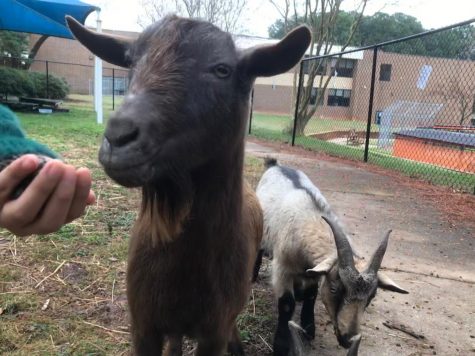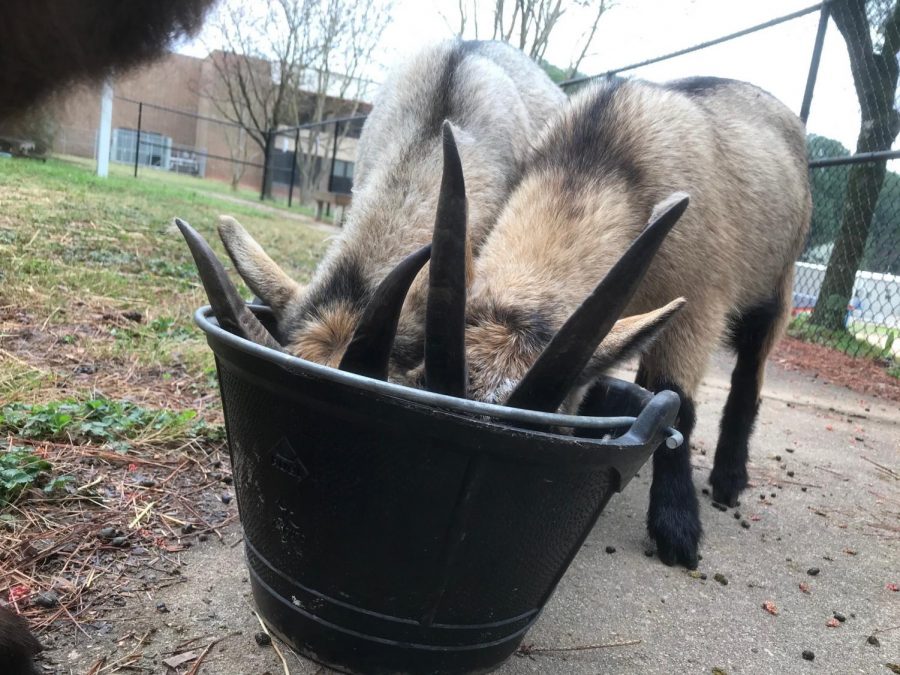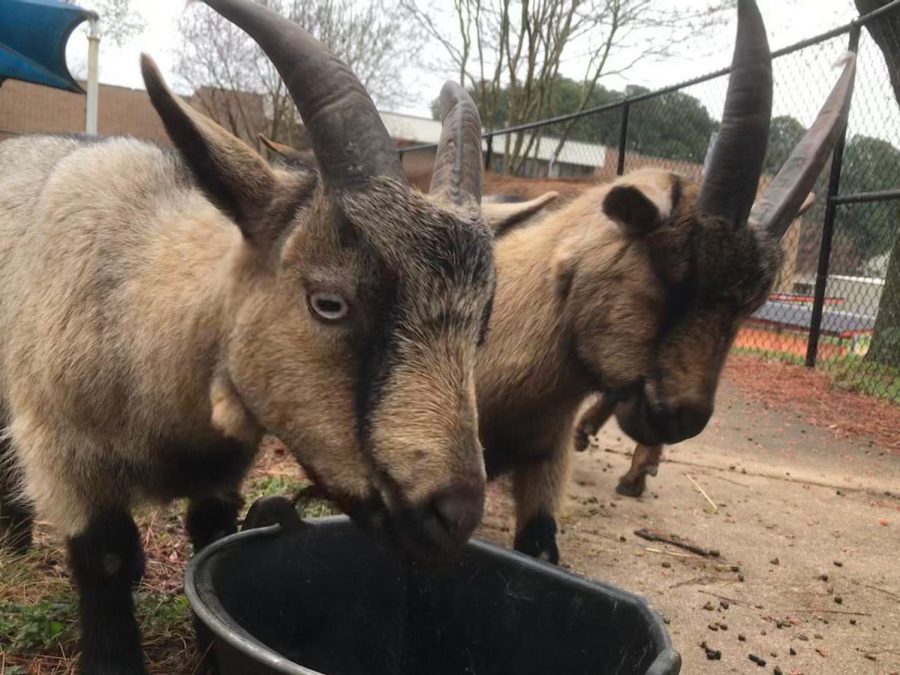Photos by Mae Attwood
During a normal year, taking care of the goats is one of the responsibilities of the animal science students.
Animal science class adapts to online learning
Over this past school year, the animal science classes at Athens Drive High School (ADHS) have adapted hands-on lessons to online learning by using virtual resources, such as virtual labs and video demonstrations.
If it were a normal school year, the animal science class would participate in labs and hands-on activities, such as caring for the animals at school and various demonstrations by veterinarians. The goats, chickens and various other pets in the animal science classrooms provide a good opportunity for students to implement the skills that they are taught in class. Now that classes are being taught virtually, the animal science teachers, Savannah Currens and Sarah Jones, have had to make adjustments to their teaching.
“I think the hardest part of teaching Animal Science virtually is adapting a very hands-on curriculum to a virtual platform. Learning how to innovate the curriculum to still provide students hands-on opportunities has been challenging,” said Jones.

The animal science class is part of the Health Science Academy, as well as part of the animal science CTE pathway. This means that upperclassmen have additional opportunities like internships, advanced studies and the vet assisting class, which students can take to become a certified vet assistant. When they start working in their internship, they already have hands-on experience and can use what they learned in class.
“One of the coolest things is when my juniors and seniors start getting jobs or going out for their internships. They remember what we did in class and that helps support them,” said Currens.
In order to give students opportunities to apply knowledge and go beyond notes, Currens and Jones have utilized virtual resources. These include online labs, interactive tours of agriculture facilities and webquests. Nearpod is a common tool they use to make powerpoints more interactive and monitor engagement. They have also created demonstration videos to show students what specific activities they might do if they were in school.
Currens and Jones have come up with ways that students can do more hands-on activities from home, as well. For example, students have been given opportunities to do tasks at home that can be related to what is being learned in class and students could sign up for slots to come help with the goats and chickens. In the upcoming school year, virtual students will be offered to pick up materials from school that would allow them to work through some of the hands-on labs with their in-person classmates.
“I was pleasantly surprised at all the activities that Ms. Currens had planned for us. She knew that online learning wasn’t an ideal situation for our class, but she was able to still make it enjoyable as well as beneficial by assigning us interactive and fun assignments,” said Carly O’Toole, junior.
Hands-on activities are important because they help students better understand the lesson and why it is being taught. They demonstrate to students what skills are needed for a career in the agriculture industry, as well as giving them practice. These skills are then used by the students when they participate in animal science programs beyond the classroom.
“There’s a very clear reason why we’re discussing the content that we’re discussing. Those hands-on experiences show that there is an application beyond just a powerpoint or the worksheet. While animal science is fun, it’s fun plus a purpose,” said Currens.

